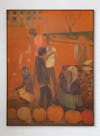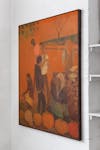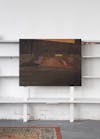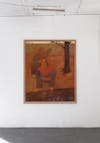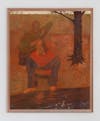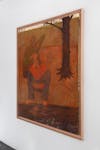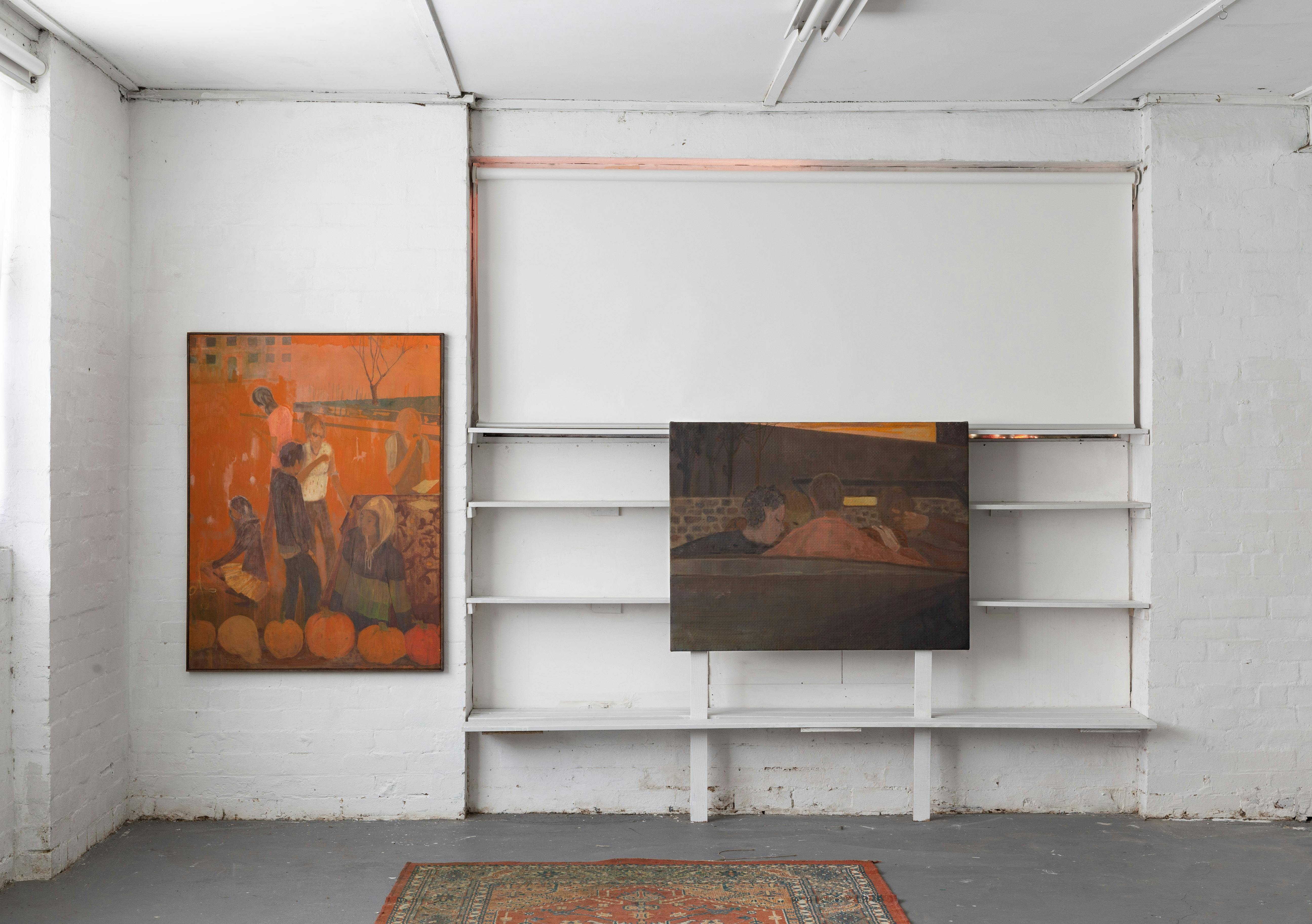
When confronted by a Travis Macdonald painting it's as if we are peering outside from a window: his scenes are often busy with people or else of contemplative lone figures. Foregrounded by surroundings from his native New Zealand and Australia, the drenching of colour he adds suspends his protagonists in an imagined obscurity. The characters' fleeting appearances are almost like spirits, details only loosely fused to the background from thinned down washes of paint.
Many of his favourite painters also disguise figures into their surroundings, notably in painting of a walk through a vineyard or composition of a court room where the figures are etched out of the backdrop, rather than attended to with their own palette. The imaginary scenes Travis conjures up serve as allegories for certain relationships and memories he plucks from his mind. Tender moments of intimacy are quietly staged amongst a bustle of action, drawing from his appreciation for paintings by , and , in which the characters are painted attending to a lover or laughing with friends.
Travis’ musical background led him to the discovery of communes from the 1960s. His paintings nod to certain congregations of people living off the land, as a figure in ‘How can you help us...’ reaches for a patch of homegrown pumpkins. We see the influence of the Post-Impressionists on his scenes, particularly , who would often paint quotidian landscapes in ultra vibrant tones. Travis spent his early years amongst the green abundance of nature in New Zealand, before moving to the arid heat of rural Australia, where this series was painted. We witness this duality of wet descending into dry from his plotting of trees, the style somehow similar to how would paint abundant bouquets of flowers in seemingly parched surroundings, or in a , where a lone tree grows from a tiny patch of grass in an otherwise flood-filled backdrop.
Inspired by alter pieces discovered on a recent trip to London, Travis’s three panoramic pieces incorporate scenes which extend into diptychs. Alluding to a storyboard or comic strip, every painting is peopled by anonymous figures who appear from one painting to the next. Their illustrative appearance draws from his interest in the paintings of , who achieves the illusion of upscaled drawings onto large fresco surfaces. Behind every Travis painting, a glow beams in the distance, lighting the way for his etched stories to beam.
References
1
2
3
4
5
6
7
8
9


